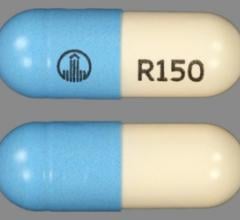
September 7, 2018 — The antithrombin drug rivaroxaban does not reduce the risk of a composite endpoint of survival, myocardial infarction and stroke after an episode of worsening heart failure in patients with heart failure, sinus rhythm and coronary artery disease. These conclusions came from late-breaking results from the COMMANDER HF trial presented in a Hot Line Session at the European Society of Cardiology (ESC) Congress 2018, Aug. 25-28 in Munich, Germany, and with simultaneous publication in the New England Journal of Medicine.1
After an episode of worsening heart failure, patients experience high rates of hospital readmission and death, particularly in the first few months. Previous studies have suggested that the enzyme thrombin may contribute to these poor outcomes by inducing inflammation, endothelial dysfunction and clot formation (thrombosis) in blood vessels.2
Rivaroxaban is an oral, direct factor Xa inhibitor that reduces thrombin generation. Higher doses (10–20 mg daily) are approved to treat and prevent venous thromboembolism, and prevent stroke or systemic embolism in patients with atrial fibrillation. Lower doses (2.5 mg twice daily), combined with antiplatelets, reduce cardiovascular mortality, myocardial infarction, and stroke in patients with acute coronary syndromes or stable coronary artery disease.
The COMMANDER HF trial tested whether, compared to placebo, rivaroxaban 2.5 mg twice daily could reduce thrombin generation and thereby lower rates of death and cardiovascular events in patients with recent worsening of chronic heart failure, who had reduced ejection fraction (40 percent or less), coronary artery disease and no atrial fibrillation.
Prof. Faiez Zannad, study author, University of Lorraine, Nancy, France, said, “COMMANDER HF is not just another trial of oral anticoagulation in heart failure. The aim is to interfere with disease processes that rely on thrombin using a targeted antithrombin drug.”
The trial enrolled 5,022 patients from 628 sites in 28 countries. Patients were randomly assigned to rivaroxaban 2.5 mg, taken orally twice daily, or matching placebo. The use of guideline recommended therapies for heart failure and coronary artery disease was well balanced between groups and included diuretics, angiotensin-converting enzyme inhibitors or angiotensin receptor blockers, beta-blockers and mineralocorticoid receptor antagonists. Background therapy included aspirin in virtually all patients, and a substantial number were also receiving dual antiplatelet agents at the time either rivaroxaban or placebo was initiated in the trial.
The median age of participants at the start of the study was 66 years, 23 percent were women and the median ejection fraction was 34 percent. Patients were followed-up for the primary efficacy outcome of all-cause mortality, myocardial infarction or stroke. The primary safety outcome was the composite of fatal bleeding or bleeding into a critical space with a potential for permanent disability.
During a median follow-up of 21.1 months, the primary efficacy outcome occurred in 626 (25 percent) of 2,507 patients assigned to rivaroxaban compared to 658 (26.2 percent) of 2,515 on placebo (hazard ratio [HR] 0.94, 95 percent confidence interval [CI] 0.84–1.05, p=0.27). There were no differences between groups in all-cause mortality (HR 0.98, 95 percent CI 0.87–1.10, p=0.74) or nonfatal myocardial infarction (HR 0.83, 95 percent CI 0.63–1.08, p=0.17) but there was a significantly lower rate of nonfatal stroke in the rivaroxaban, compared to placebo, group (HR 0.66, 95 percent CI 0.47–0.95, p=0.023).
The principal safety outcome occurred in 18 (0.7 percent) patients assigned to rivaroxaban and 23 (0.9 percent) assigned to placebo (HR 0.80, 95 percent CI 0.43–1.49, p=0.48). Patients taking rivaroxaban had a significantly higher risk of major bleeding as defined by the International Society on Thrombosis and Haemostasis (ISTH) compared to those on placebo (HR 1.68, 95 percent CI 1.18–2.39, p=0.003). This result was mainly driven by the ISTH criterion of bleeding causing a fall in haemoglobin of 2 g/dL (1.24 mmol/L) or more.
Serious adverse events were reported in 479 (19.2 percent) patients taking rivaroxaban and 451 (18 percent) on placebo. The percentage of patients who permanently discontinued study medication due to an adverse event was 7.1 percent in the rivaroxaban group and 5.8 percent in the placebo group.
Zannad said, “The most likely reason rivaroxaban failed to improve the primary efficacy outcome is that thrombin-mediated events are not the major driver of cardiovascular events in patients with recent heart failure hospitalization. Whether a higher dose of rivaroxaban could have led to a more favorable result is unknown.”
For more information: www.nejm.org
Reference


 August 28, 2023
August 28, 2023 








